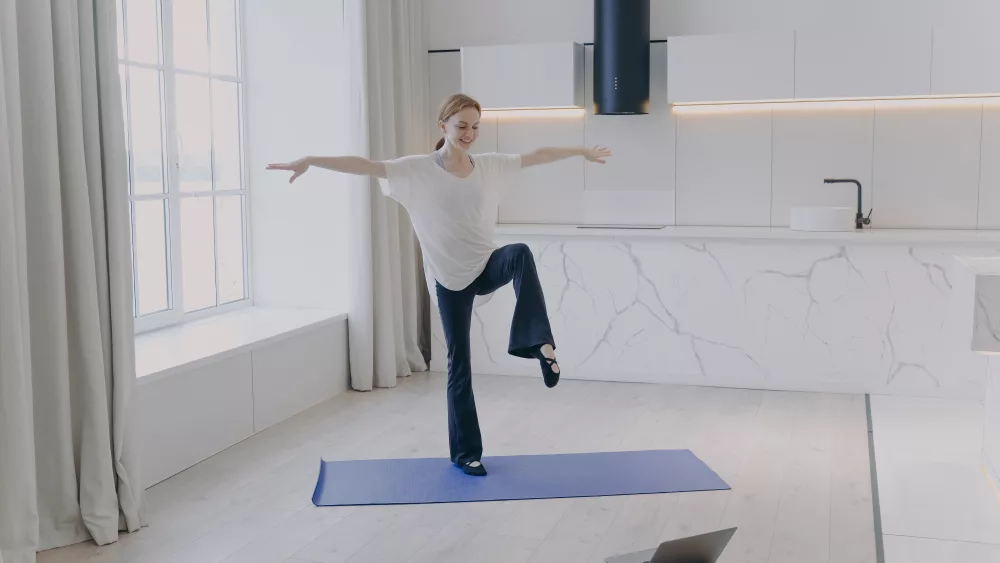ROCHESTER, Minn. — Want to know how well you’re aging? Try standing on one leg. A new study suggests that your ability to balance on a single leg could be the most reliable indicator of age-related decline, outperforming traditional measures like grip strength, walking speed, or two-legged balance tests.
The research, published in PLOS ONE, finds that among healthy adults over 50, the time someone could maintain balance on one leg — particularly their non-dominant leg — showed the fastest rate of decline with age compared to other physical measures. This simple test proved to be equally effective for both men and women, making it a potentially valuable tool for healthcare providers and individuals wanting to monitor their aging process.
Researchers at the Mayo Clinic and several other institutions conducted a comprehensive movement analysis on 40 healthy adults, divided equally between those under and over 65 years-old. The study included various tests measuring participants’ strength, balance, and walking patterns to understand how these abilities change as we age.
Surprisingly, while walking patterns remained relatively stable across age groups, other measures showed significant age-related declines. The ability to stand on one leg decreased most dramatically — about 2.2 seconds per decade for the non-dominant leg and 1.7 seconds for the dominant leg. This was followed by increased body sway during two-legged standing and declining grip and knee strength.
What makes this finding particularly significant is its practical application. Unlike many other aging assessments that require specialized equipment or medical expertise, the one-leg standing test is something anyone can do at home. It’s as simple as timing how long you can balance on one leg while keeping your eyes open.
The study also revealed interesting patterns in how our bodies maintain balance as we age. While all participants could stand normally on two legs for the required 30-second duration, older adults showed more body sway, suggesting they needed to make more frequent adjustments to maintain their balance. This increased sway was even more pronounced when participants closed their eyes, highlighting how vision plays a crucial role in maintaining balance as we age.

One of the study’s notable findings was how aging affects men and women similarly in most measures, despite some baseline differences. While men demonstrated approximately 30% higher grip strength and 27% higher knee strength than women overall, both sexes experienced nearly identical rates of decline with age. Grip strength decreased by about 3.7% per decade and knee strength by 1.4% per decade, regardless of sex.
Perhaps most importantly, there were no significant differences between the sexes in terms of balance abilities or their rates of decline. Both men and women showed similar decreases in single-leg standing time and similar increases in body sway during two-legged standing as they aged. The only notable difference in overall movement patterns was in the “double support” phase of walking (when both feet are on the ground), though this difference wasn’t related to age.
Interestingly, walking patterns, including speed, stride length, and stability, showed no significant changes with age in this healthy adult population. This suggests that basic walking ability remains relatively preserved in healthy aging, while more challenging activities like single-leg standing may reveal early signs of age-related decline.
The research suggests that while men and women may have different absolute strength levels, the aging process affects their balance and coordination in remarkably similar ways.
Moving forward, this research could change how we approach aging assessment both in clinical settings and at home. The simplicity of the single-leg balance test, combined with its effectiveness, makes it a powerful tool in understanding how we age.






